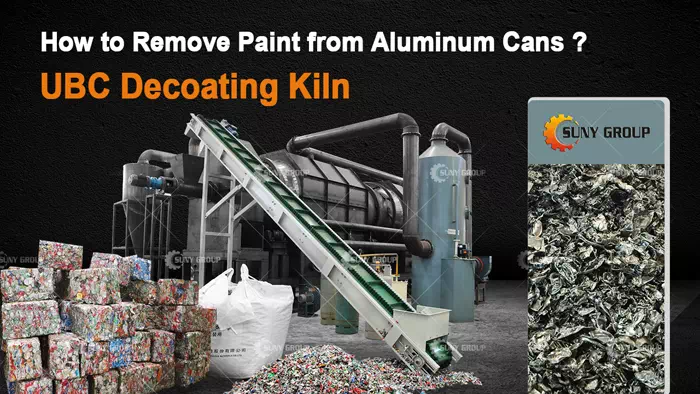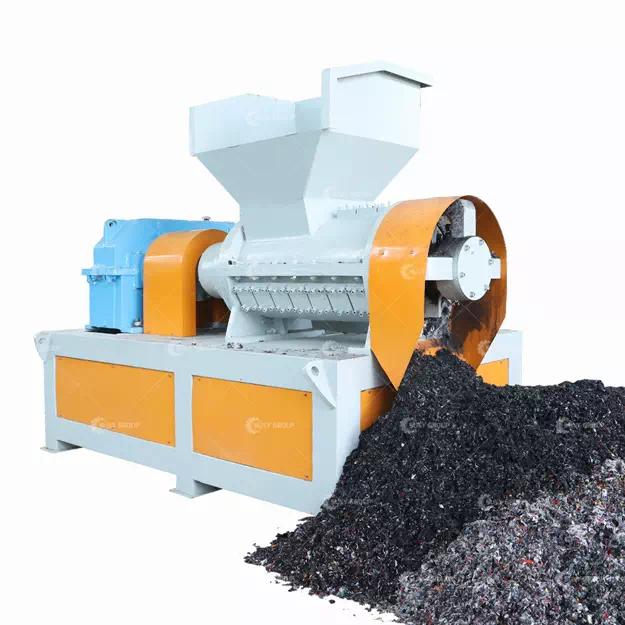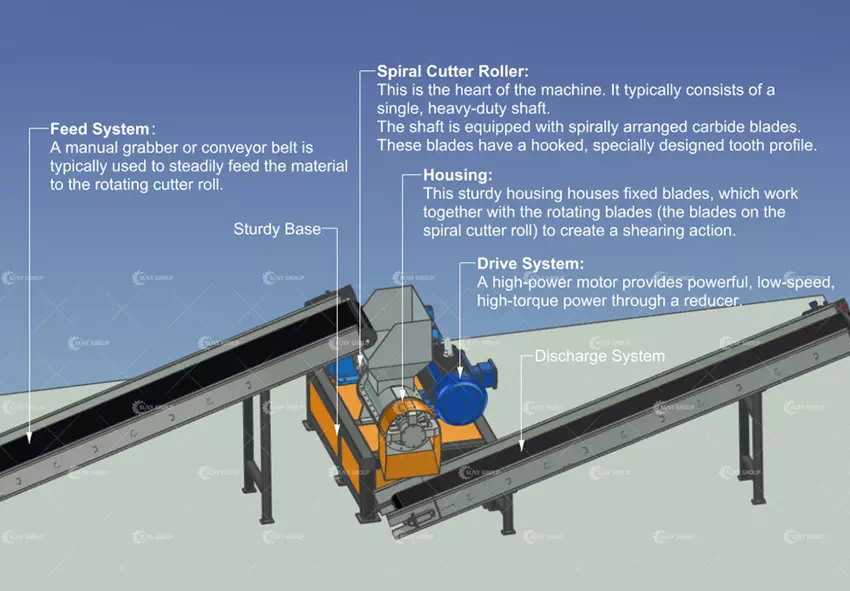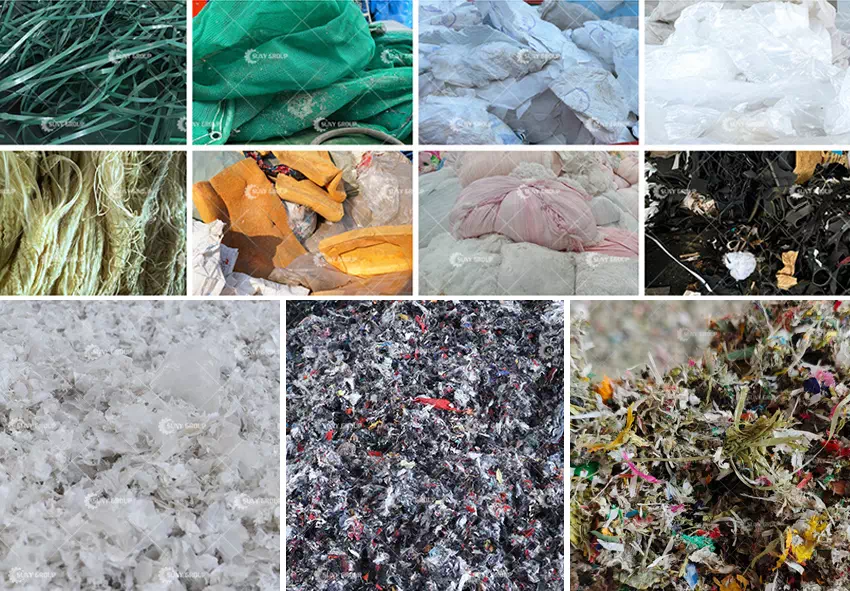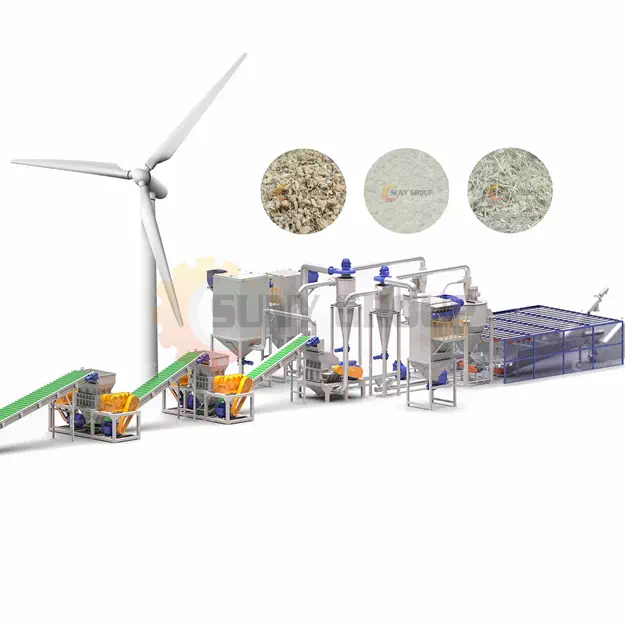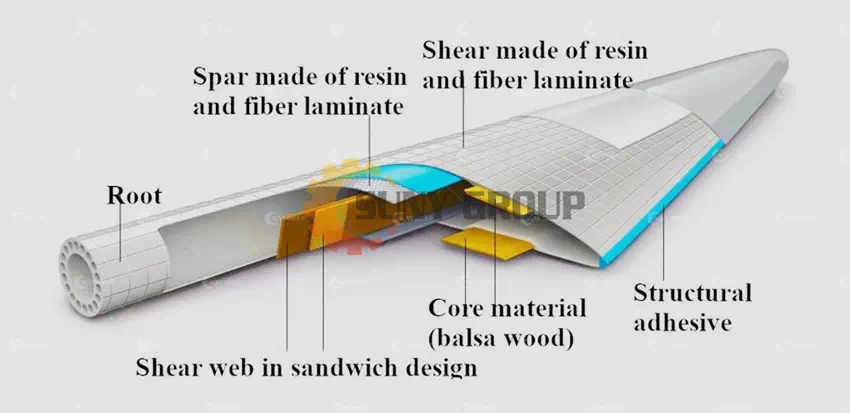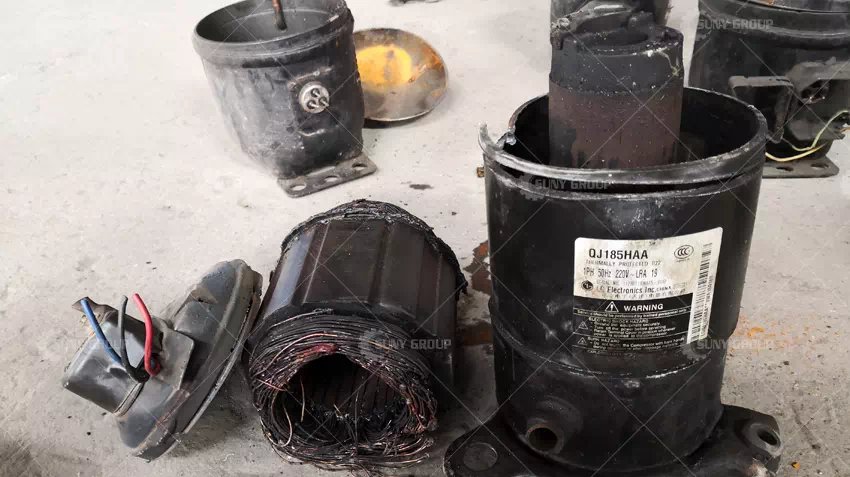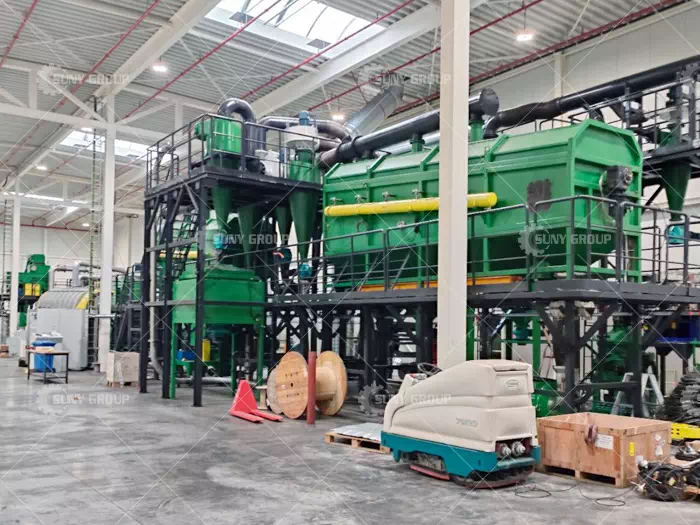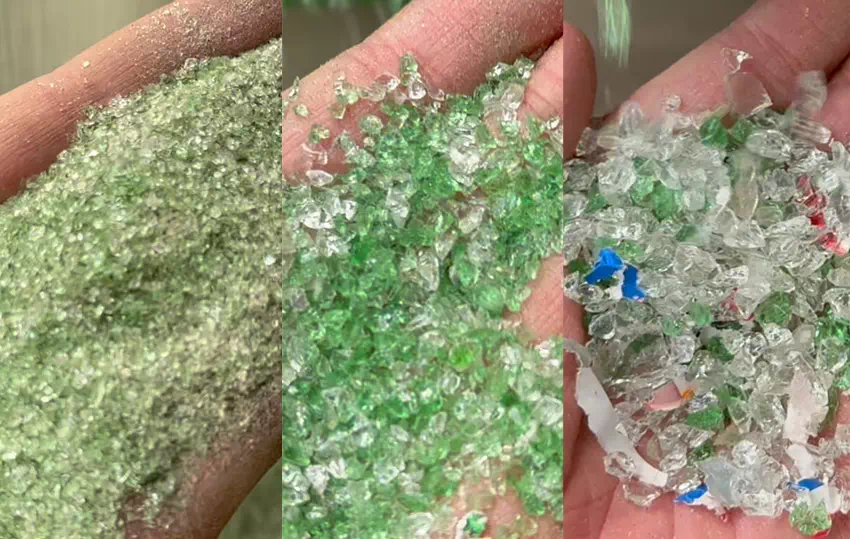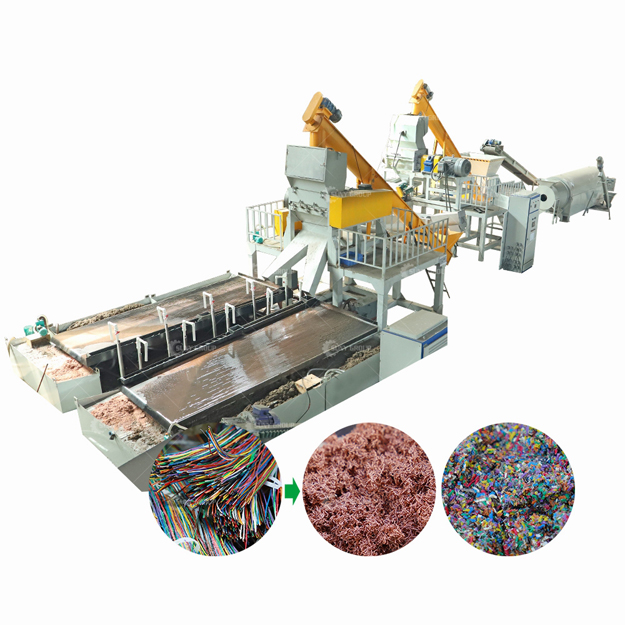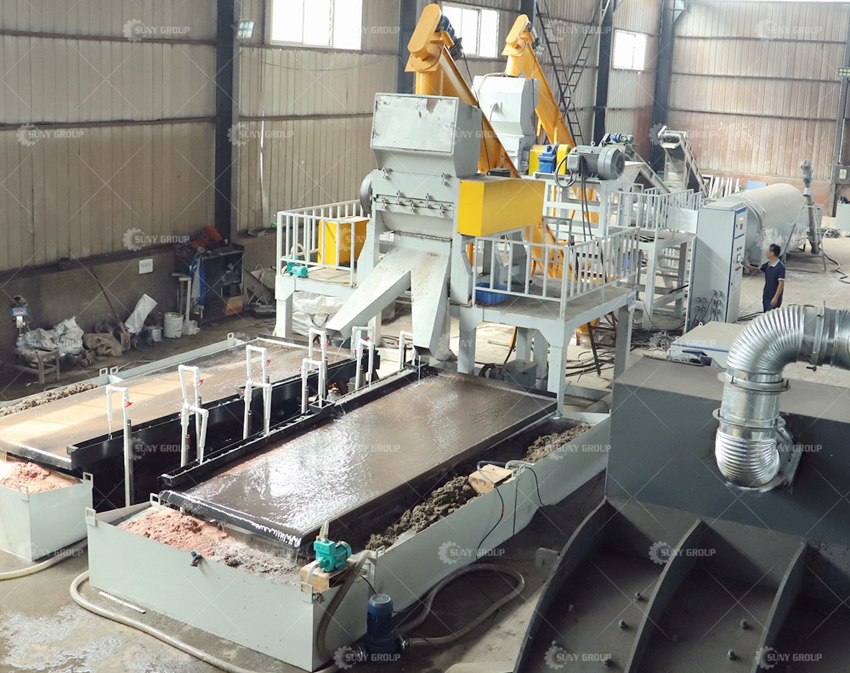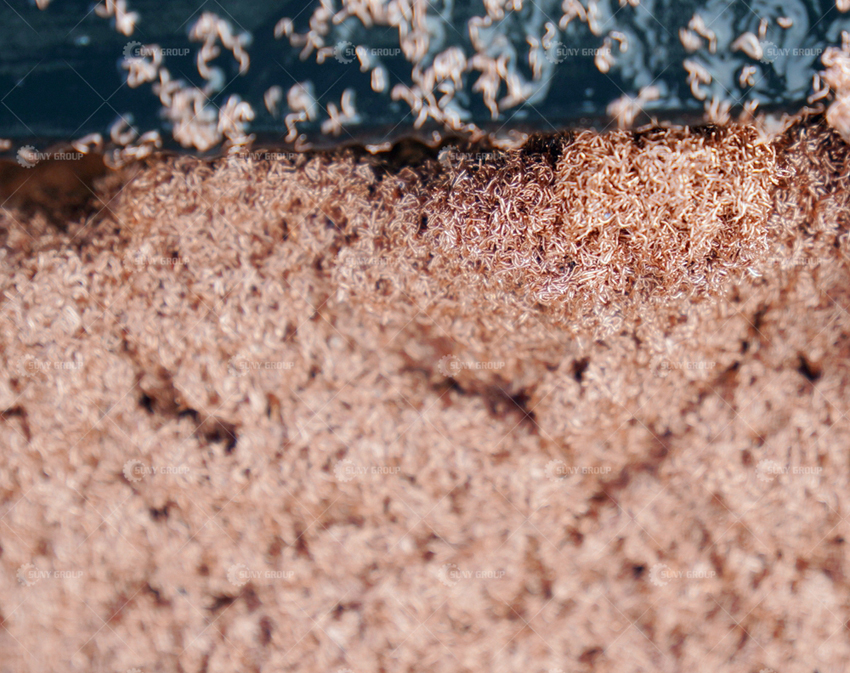Waste tires have a complex structure and high strength, making direct processing difficult. Dual-shaft shredders are specifically designed for this type of high-strength waste. The equipment uses a high-torque cutter shaft to quickly shred the tires into uniform rubber blocks, ensuring processing efficiency while avoiding excessive stretching and equipment wear.
During the shredding process, a rotating screen simultaneously controls the size of the rubber blocks. Only particles meeting the standard are discharged, ensuring smoother subsequent separation steps. The core objective of this step is to transform the entire tire into stable rubber blocks suitable for the next processing stage.
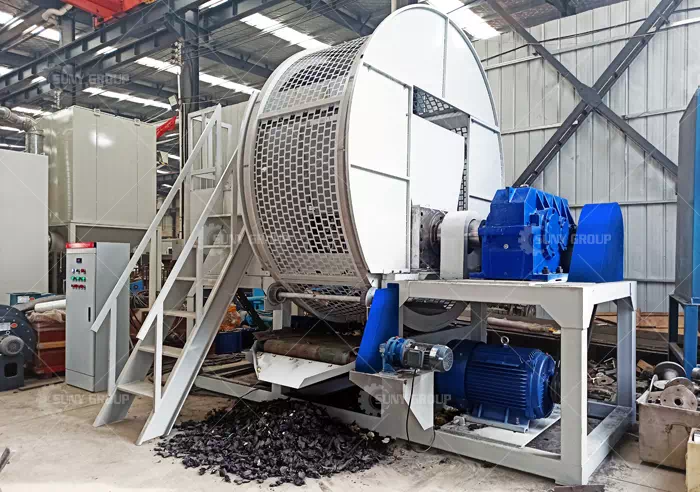
Scrap Tyre Wires Shredder Machine
Tires contain a large number of high-strength steel wires, which must be separated to obtain high-purity rubber. After the rubber blocks enter the steel wire separator (also known as a heavy-duty shredder), they are further crushed and physically separated to efficiently separate the rubber from the steel wires.
The separated rubber particles are clean and uniform in size, and can be directly used in industries such as recycled rubber granules, track materials, floor mats, and vibration-damping bricks. The separated steel wires can also enter the metal recycling system, further improving overall recycling efficiency.
Its advantages include:
• High processing capacity, easily handling both whole and cut tires
• Precise shredding and separation, resulting in high-purity rubber granules
• Stable operation and low maintenance costs
• Rapidly improves raw material utilization efficiency and economic benefits
If you need information on equipment pricing, capacity specifications, or complete tire recycling solutions, please feel free to contact us. We will provide you with more professional technical support and detailed information.




